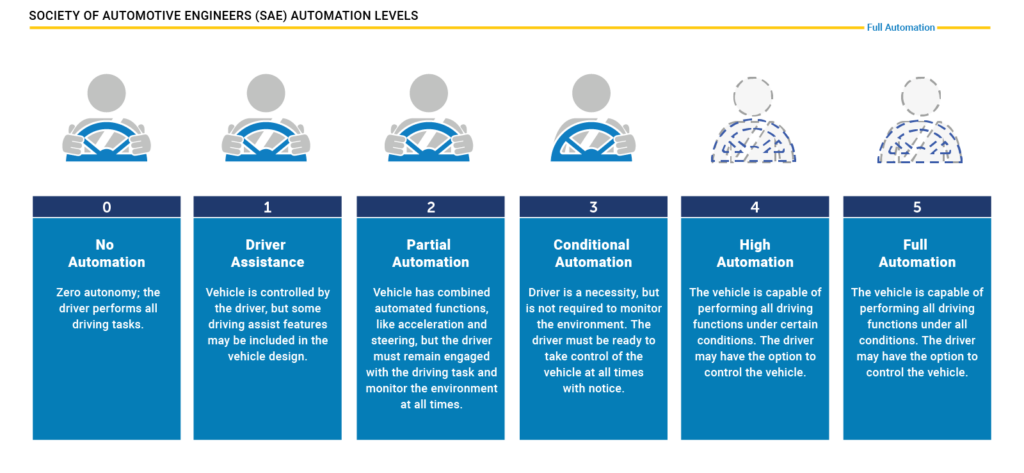Smart Car Road Testing 101

Autonomous driving technologies are revolutionizing America’s cars and highways, in an effort to give us greater safety, access and peace of mind than ever before. It’s also posing unique opportunities and challenges for our cities, which are beginning to rethink the streetscape and the infrastructure that supports our ever-mobile lifestyle. Although testing bodies like the NHTSA and IIHS have done yeoman’s work in evaluating vehicles’ crash safety, a different skill set and series of tests is required to evaluate the autonomous driving capabilities of modern vehicles — including those yet to come. The American Center for Mobility is filling the gap, thanks to a sprawling and innovative 500-acre Smart City Test Center in Ypsilanti, Michigan. Here, we provide an incubator for tech innovation, an atmosphere that fosters collaboration, and a test track that provides for testing in real-world settings.
Smart Cars: An Overview
What makes a car “smart”? It starts with a level of autonomy. Although we’re still some time from fully autonomated vehicles, tremendous strides are being made on a near-daily basis, and most importantly the research and development we’ve helped to shepherd along is already paying dividends in creating smarter vehicles translating to safer journeys for people. Autonomous driving is classified by the Society of Automotive Engineers (SAE) along a continuum:
- Level 0: No automation. This applies to most commercially-available vehicles built prior to 2014.
- Level 1: Driver assist features that provide some level of automatic braking, smart cruise control, and various alert capabilities.
- Level 2: Limited control over speed and steering, including centering and lane keep assist; these still require the driver to be alert and ready to take the wheel.
- Level 3: Conditional automation also requires driver input, but allows the vehicle to drive itself under certain ideal conditions, such as a straight stretch of limited access road. While rare, this is an emerging technology.
- Level 4: This technology, which requires only minimal human interaction, is still in its infancy; these vehicles could drive themselves under most conditions, but the legal and regulatory environment still lags the technology.
- Level 5: Here, your vehicle wouldn’t need a driver, pedals, or a steering wheel, since it’s completely autonomous. Testing is underway for freight hauling with level 5 autonomy, but it may be a long time before this technology is available to everyday drivers.
Road Testing Smart Cars
As you can imagine, smart cars are very tech-intensive. Even low-level automation requires a system of onboard sensors (Radar, LIDAR, cameras, and more). However, technology that’s currently in development leans heavily on V2X (Vehicle-to-X, where “X” is the other systems and vehicles with which your car, truck, or SUV can communicate). This requires a more robust information infrastructure to handle a higher volume of data, and extensive testing to ensure that systems are safe not only for vehicle occupants, but also for pedestrians, bikers, and others with whom we share the road.
To that end, the American Center for Mobility has developed a test track that allows testing of smart vehicles in a number of real-world applications. This allows stakeholders to evaluate and validate system and vehicle performance.
Freeways, residential areas, traffic circles, pedestrian and bike access areas, parking areas, rural neighborhoods, urban canyons, bridges, and tunnels are all laid out along the route, the better to anticipate and solve for the kinds of problems an autonomous vehicle might encounter. We’ve also incorporated triple-decker areas along the route in order to allow testing of technology along all three axes (most test tracks will only allow testing on the X and Y axes; ours allows testing of Z-axis technology as well).However, our smart city test center provides more than the test surfaces that engineers might look to find in a traditional proving ground. It’s underpinned by the kinds of technology that are likely to drive the autonomous experience in the future, including a CAV-specific 5G test bed from AT&T, high-volume cloud computing capability from Microsoft, private vehicle labs backed by professional engineering services from companies like Intertek and Siemens, and much more. Like the customers we service, the facility is in a constant state of motion, innovation, and improvement. For help developing test plans when there is ambiguity in standardization, or validating your autonomous technology in a real world environment, get in touch with the American Center of Mobility today.
